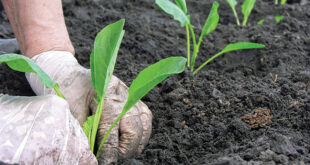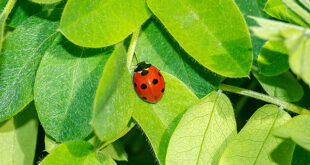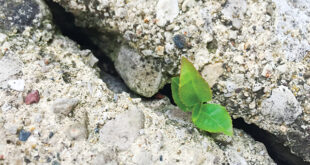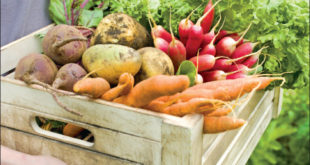By Sue Odland
New Beginnings
Shake off those winter blues for the promise of a world of green. As the cold recedes, and the promise of spring peeks through, gardeners’ thoughts turn to visions of lush green beds dotting their landscapes. Take time during this resting phase of the growing season to plan your upcoming garden. Thoughtful planning and preparation sets the foundation for a harvest brimming with delicious home-grown fruits and vegetables.
Dreaming of Seeds
Seed company catalogs are in abundance at this time of year. Their pages burst forth with colorful, mouth-watering promises of delights to come. Even though websites abound, there is something soothing about turning beautifully illustrated and photographed pages on a lazy winter’s day. To order these gardening dream books, or to simply browse seed sites: search online for “heirloom, organic, non-GMO seed companies,” or visit MotherEarthNews.com for its list of favorite seed providers.
After perusing catalogs or websites, make a wish list of seeds to purchase. Just like picking produce from the grocery store, choose organic, non-GMO, heirloom varieties whenever possible, for better flavor, and less chemical exposure. Also, keep in mind your garden size and space allotment, as one packet of seeds can go a long way. Order seeds early to capture favorite varieties, and receive any available early vendor discounts and promotions.
Planting in Time
Create a planting timetable listing the ideal dates to plant your newly purchased seeds. Planting seeds in the proper growing season leads to successful plant growth and production. Does your chosen vegetable favor cooler weather or warmer weather? This information will help determine when to plant the seeds. Cool-season crops favor an average daily temperature of 70° or less, while warm-season crops grow better in daily temperatures averaging between 70 to 90°.
Cool-season vegetables such as beets, broccoli, Brussels sprouts, cabbage, carrot, kale, leeks, lettuce, onion, peas, radishes, and spinach, should be planted in early spring, and then again in the fall, as these varieties can withstand some frost. Warm-season vegetables such as cucumber, eggplant, beans, squash, and corn, should be planted after the soil has warmed up, and the danger of frost is over.
However, warm-season tomatoes and pepper seeds need to be started indoors, six weeks before the average last frost date. Daily monitoring and attention is required for this process. To learn proper steps to start seeds indoors, visit rodalesorganiclife.com/home/start-seeds-your-kitchen-table. For gardeners who are short on time, simply purchase tomato and pepper starter plants from a local garden store in late May or June. For an easy-to-check chart on optimal planting times for seeds and starter plants, check the Old Farmer’s Almanac at almanac.com/content/vegetable-garden-planner.
Whether you are a first-time gardener, or one with soil deep under your nails, take a few moments in the garden, filled with delicious delights for a bountiful summer ahead.
Sue Odlandis a free-lance writer and Midwestern gardener.
 Conscious Community Magazine Dedicated to Elevating Consciousness
Conscious Community Magazine Dedicated to Elevating Consciousness





